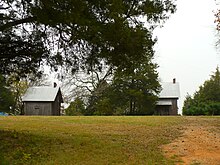Faunsdale, Alabama | |
|---|---|
 Location of Faunsdale in Marengo County, Alabama. | |
| Coordinates: 32°27′33″N87°35′35″W / 32.45917°N 87.59306°W | |
| Country | United States |
| State | Alabama |
| County | Marengo |
| Area | |
• Total | 0.28 sq mi (0.72 km2) |
| • Land | 0.28 sq mi (0.72 km2) |
| • Water | 0.00 sq mi (0.00 km2) |
| Elevation | 220 ft (67 m) |
| Population (2020) | |
• Total | 90 |
| • Density | 324.91/sq mi (125.43/km2) |
| Time zone | UTC-6 (Central (CST)) |
| • Summer (DST) | UTC-5 (CDT) |
| ZIP code | 36738 |
| Area code | 334 |
| FIPS code | 01-25816 |
| GNIS feature ID | 0118220 |

Faunsdale is a town in Marengo County, Alabama, United States. At the 2020 census the population was 90, [2] down from 98 in 2010. Faunsdale is home to a community of Holdeman Mennonites, the only such community outside of Greensboro, Alabama. The town has the only Holdeman Mennonite Church in the area, Cedarcrest Mennonite Church.
